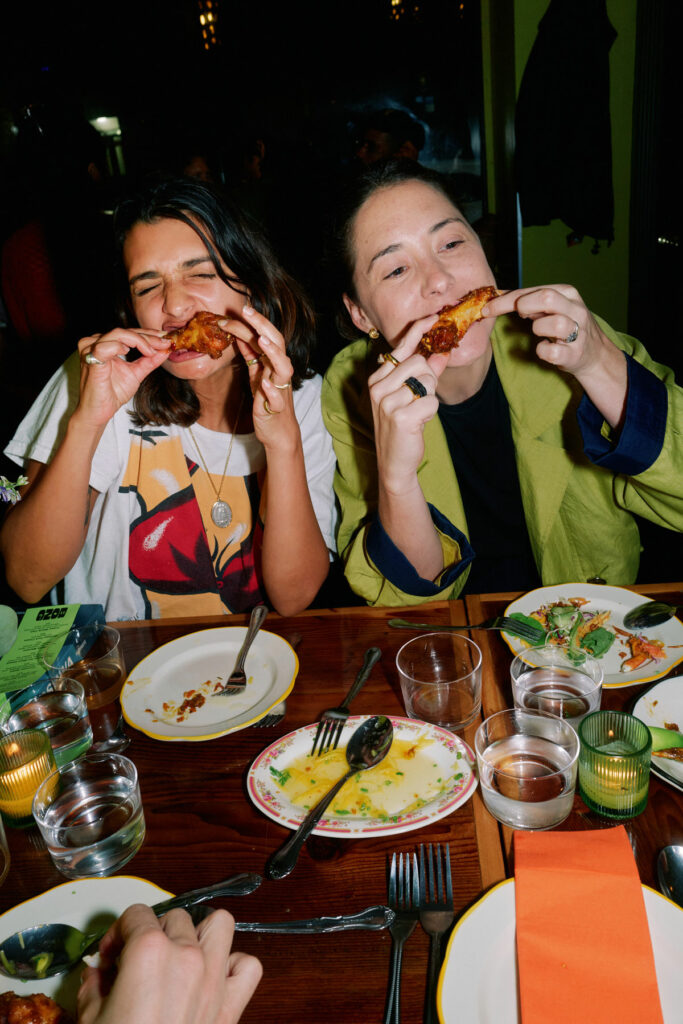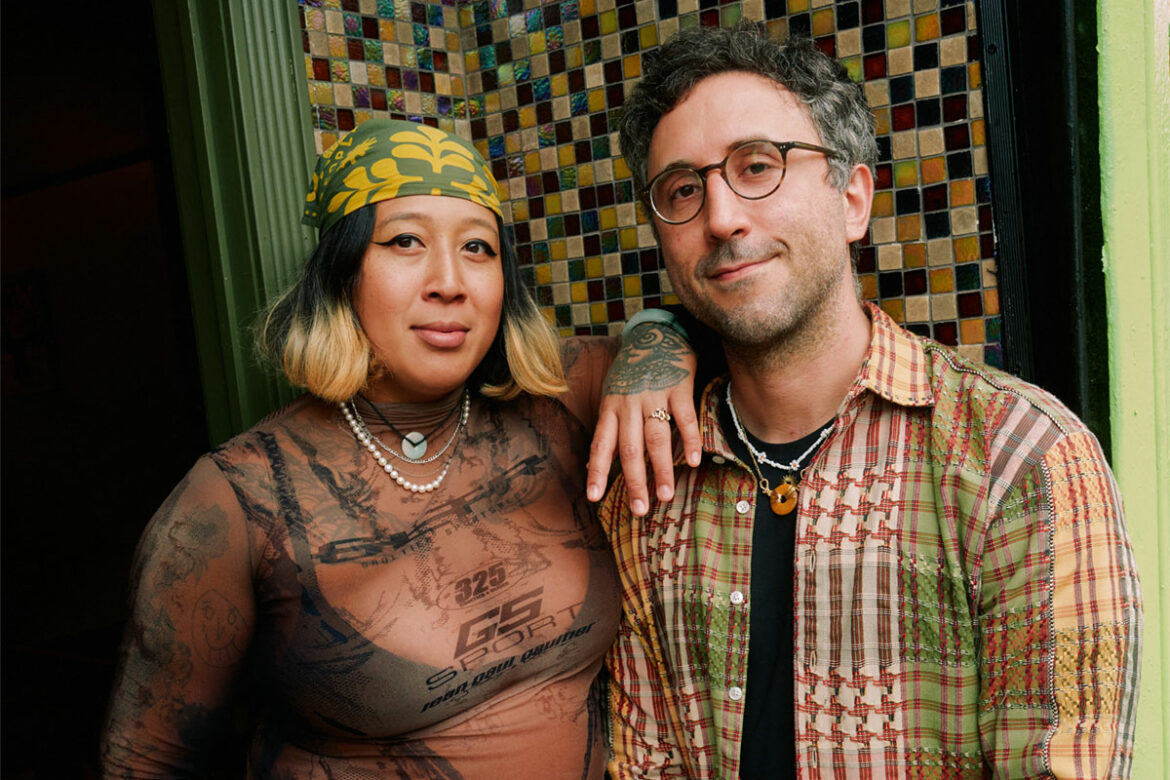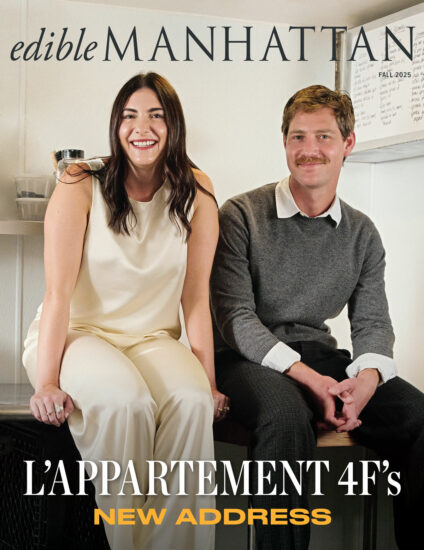After securing a lease, renovating their restaurant, and painting their walls several shades of green, the owners of Bong were ready to peel their garlic. Chefs Chakriya Un and Alexander Chaparro sat across from each other, separated by a sloshing plastic tub. Every few seconds, one of them would reach inside with a wet, tattooed hand and fish out a bulb for a peeling.

This is for our kroeung paste,” Un says. “It’s the backbone of Cambodian cuisine.”
Kroeung—made from garlic, galangal, and other spices—doesn’t show up often enough in New York restaurants. It’s rarely found in stores, and the fragrant, fermented paste is on the Health Department’s list of most wanted sauces. In a city where Cambodian restaurants can still be hard to find, cooking with kroeung often means making it from scratch.
Of course, this is nothing new for Un. Since 2016, the chef has been scavenging the city and its suburbs for herbs and pastes that taste like home. Her roving kitchen, named Kreung, has served Cambodian food from just about every beach shack and skate shop in the city. At this point, she’s become an unofficial spokesperson for Cambodian cooking, also called Khmer cuisine.

“More than anything, I want this culture and food to be represented,” she says. Her vision goes beyond food. Un and Chaparro are pregnant with their first child, and the owners have been building a restaurant that can support a family and the wider Cambodian community. The name, Bong, is a Khmer honorific for an older sibling or friend.
The space in Crown Heights was last home to a burrito shop with no indoor seating. But over the last year, the owners carved out space for a small dining room layered with personal meaning. The cantaloupe-shaped light fixtures and vintage-looking chairs were made by friends; the peacock mural in the bathroom was painted by the couple.

“Everything in here was made with love by someone we know,” Un says. (The box of rhinestones on the floor hints that the decorating might not be done.)
What’s for dinner? Whole stir-fried lobster is on the menu. And so is salaw machu kroeung, a sour soup whose recipe was passed down from Un’s mother. “These are dishes that you cannot really get here,” Un says. In the case of her mother’s cooking, they don’t require much intervention. “My mom’s versions of these dishes are slamming,” she says.
To do these dishes justice, it takes the entire family. Un’s mother catches the striped bass for the restaurant’s fermented fish paste, and there’s a supply of fish mint hiding under her aunt’s deck. Other essentials come from Cambodian aunts on Facebook Marketplace.

Still, this is Crown Heights, not Cambodia, and local substitutions are inevitable. The sour sorrel in their kitchen wouldn’t be used overseas, and the eggplants here are several times larger than anything your bong would have eaten.
“That’s my favorite part of being a chef in New York,” Un says. “This is just my translation.” She reaches for another clove of garlic, and keeps peeling.



